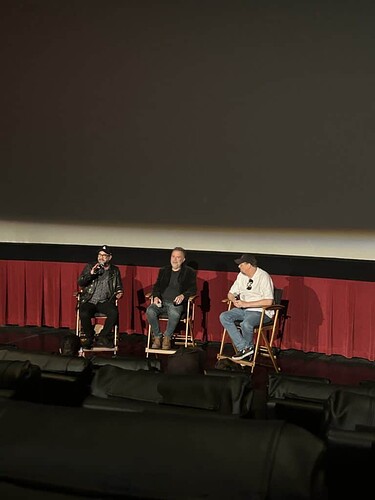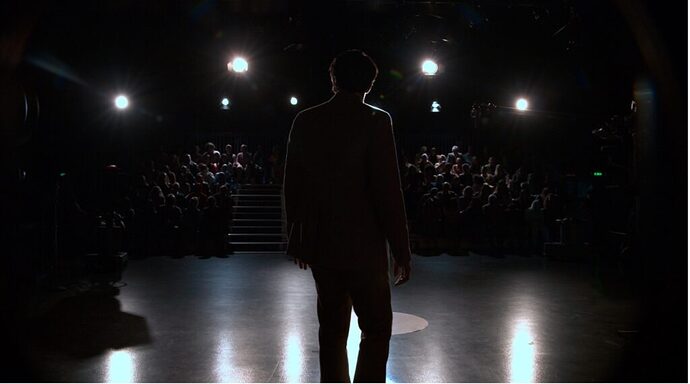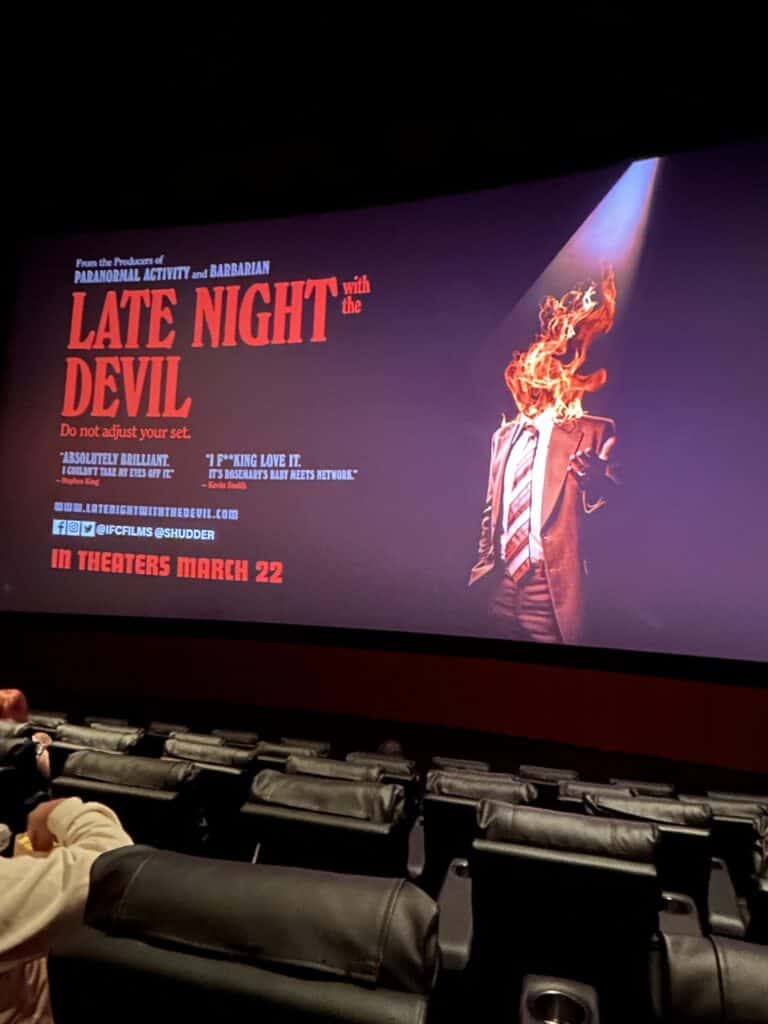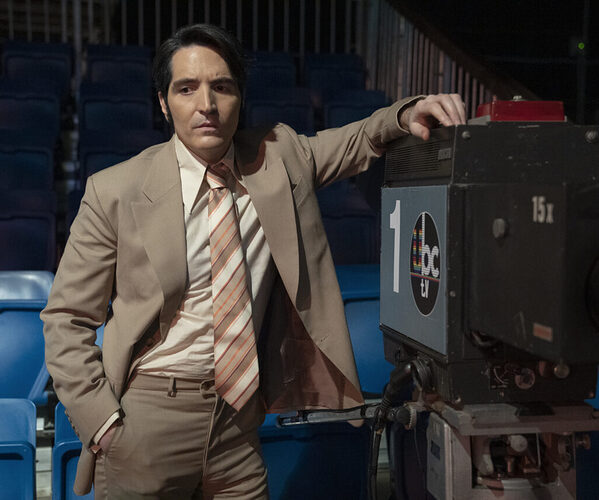Originally published at: Support the Thrill of Independent Horror Cinema with "Late Night with the Devil" -
Author: Travis Hayward
Last summer, the entertainment industry found itself amid a massive impasse. The Writer’s Guild of America and the Screen Actors Guild were deadlocked in two of the longest strikes in Hollywood history. Needless to say, this gravely impacted the schedule of San Diego Comic-Con, which has become a massive promotional tool for film studios over the past two decades. As a result of the strikes, WGA and SAG members were instructed by their respective unions not to promote any upcoming projects made by the studios they were striking against. They marked a significant moment in Hollywood for the disruption they caused and the spotlight they cast on the often-undervalued realm of independent cinema. With significant studio projects on pause, the creative vacuum turned the industry’s eyes towards films outside the mainstream circuit.
Because independently produced projects were exempt, while attending SDCC I was lucky to be among the first to get a sneak peek at what I believe to be the most chilling horror film I’ve seen since the 1973 classic, The Exorcist. Directed by Colin and Cameron Cairnes, Late Night with the Devil emerges as a chilling addition to the horror genre, blending elements of psychological terror with supernatural intrigue.
I will soon see this masterpiece two more times at two different screenings with Q&As from the directors and a live-streamed Q&A with the lead actor, David Dastmalchian.
My second screening of this film took place on Friday night, March 15th, at an early press screening conducted by Alamo Drafthouse in conjunction with Fantastic Fest. I attended the Los Angeles screening, but fans lucky enough to find themselves at the Brooklyn location were greeted afterward by none other than Dastmalchian himself.
Set against the backdrop of a syndicated late-night talk show in 1977, the film grips audiences from the opening scene and refuses to relinquish its hold until the haunting final frame. The story follows Jack Delroy (played masterfully by Dastmalchian), a late-night talk show host grappling with both personal tragedy and professional decline. As Delroy schemes to revive his failing show with a Halloween special, he unwittingly unleashes malevolent forces that threaten not only his own sanity but the very fabric of reality itself.
The film brilliantly captures the essence of 1970s television culture, presenting itself as a lost videotape of an episode of “Nite Owls with Jack Delroy.” Intercut during the “commercial breaks” with “behind-the-scenes footage,” the film immerses viewers in the nostalgic ambiance of late-night broadcasts and retro aesthetics. From the authentic set design to the meticulously crafted costumes, every detail contributes to the film’s immersive atmosphere, evoking a sense of unease and foreboding.
Dastmalchian delivers a standout performance as Jack Delroy, portraying the character’s descent into madness with a haunting intensity. His portrayal of a man consumed by grief and obsession is both captivating and deeply unsettling, anchoring the film with emotional resonance amidst the supernatural chaos. Dastmalchian noted during the Q&A that for certain moments of the film he reached from his own trauma that he’d experienced in his own life to convey Jack’s overwhelming desire to “wake up” from the nightmare he’s found himself in.
The film’s ensemble cast features Jack’s numerous guests throughout the evening’s broadcast: The mysterious psychic medium, Christou (Fayssal Bazzi), the less-than-impressed former magician-turned-skeptic Carmichael Haig (Ian Bliss), Paranormal researcher Dr. June Ross-Mitchel, the doctor’s ward/test subject Lilly (Ingrid Torelli), and the all too common but necessary late night humorous TV sidekick, Gus McConnell (Rhys Auteri).
The Cairnes brothers demonstrate a keen understanding of horror tropes, expertly building tension through a combination of atmospheric cinematography, eerie sound design, and spine-tingling special effects. Each scare is meticulously crafted for maximum impact, keeping audiences on the edge of their seats from start to finish.)
My third screening of this film was at the historic TCL Chinese Theater on Wednesday, March 20th, two days before this film was to release in theatres nationwide. The brothers attended and were moderated by Aaron Sagers (from Den of Geek). They spoke about their love of late-night 70s talk shows. They had a particular fondness for Don Lane, a Bronx-native who became a popular late-night talk show host in the Cairnes brothers’ native Australia. Lane would frequently bring guests associated with the paranormal macabre, such as demonologists Ed and Lorraine Warren. The brothers also took time to shout out the performance of Auteri. They revealed that Auteri had been trained in improv and sketch comedy but never acted on film before obtaining the role.
Beyond its surface scares, Late Night with the Devil delves into deeper thematic territory, exploring the consequences of unchecked ambition and the blurred boundaries between reality and illusion. As the line between performer and audience blurs, the film poses thought-provoking questions about the nature of fame, the power of the media, and the price of success.
The haunting horror masterpiece Late Night with the Devil will linger in viewers’ minds long after the credits roll. Its gripping storyline, stellar performances, and spine-chilling atmosphere cement the Cairnes brothers as formidable talents in horror cinema. Prepare to be enthralled, terrified, and ultimately mesmerized by this unforgettable cinematic experience, which will be in theatres nationwide today, March 22nd, and streaming on Shudder on April 19th.
After immersing yourself in the spine-chilling world of Late Night with the Devil, let this film inspire you to delve deeper into the rich tapestry of independent cinema. Often born from a blend of passion, creativity, and resilience, these films thrive outside the mainstream spotlight and deserve our collective support. By championing independent projects, we celebrate artistic diversity and ensure that unique voices and stories continue to find their audience.



